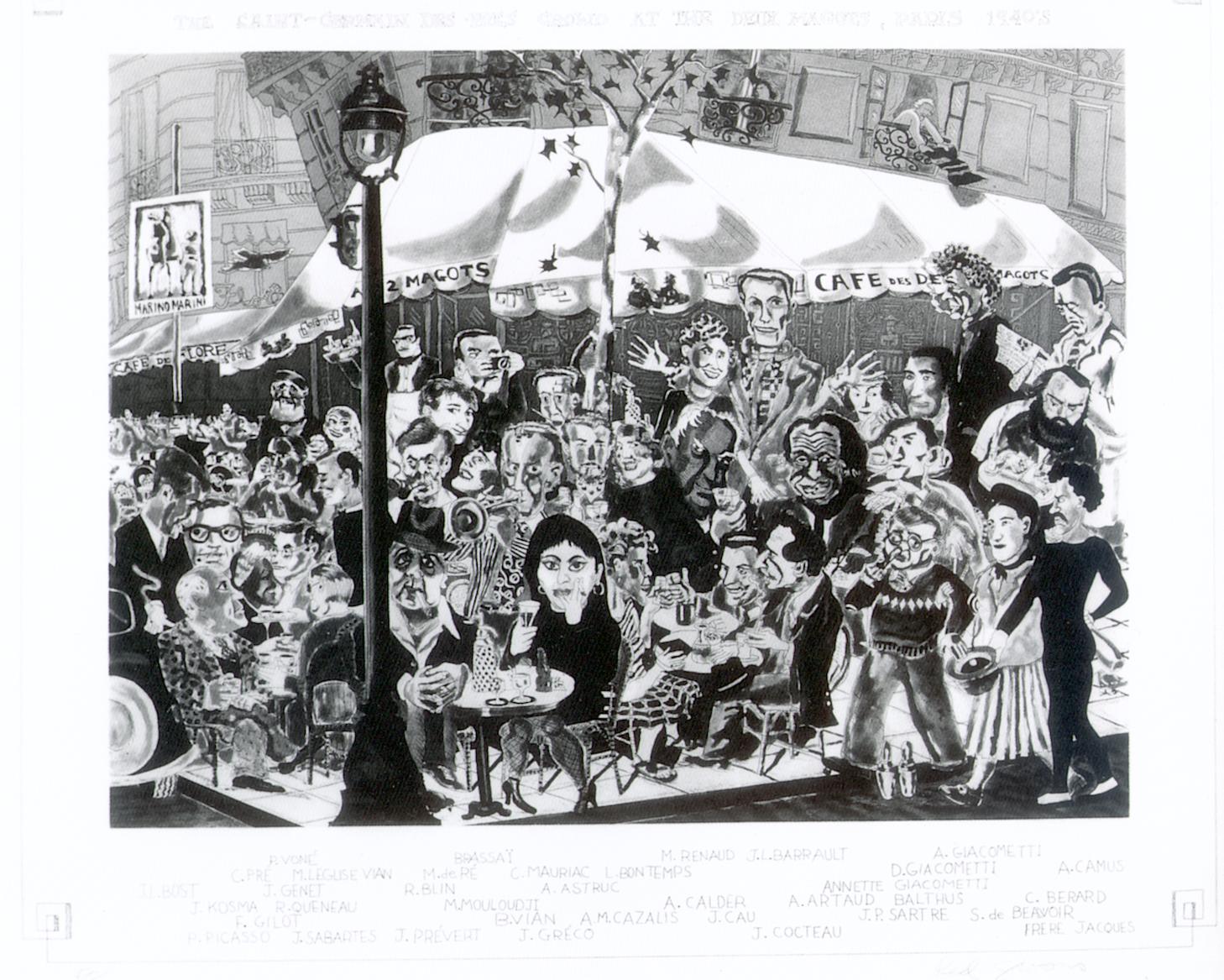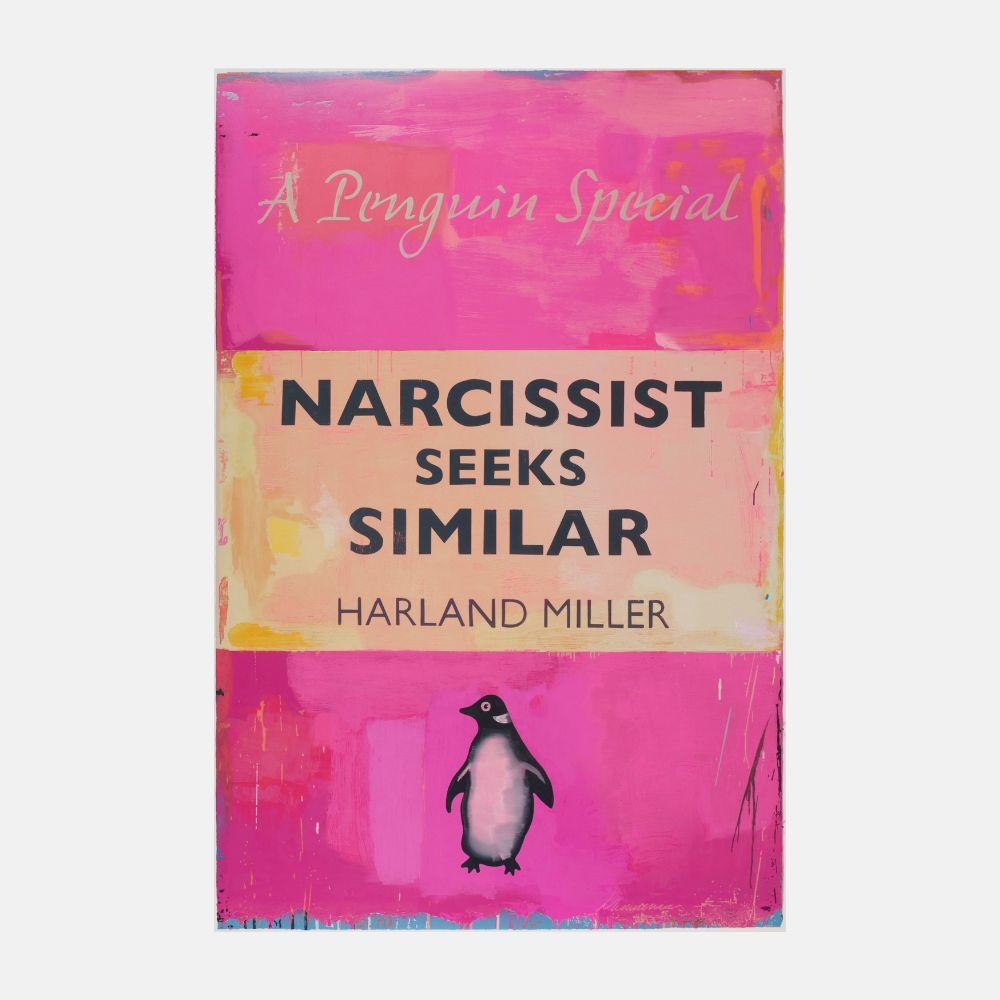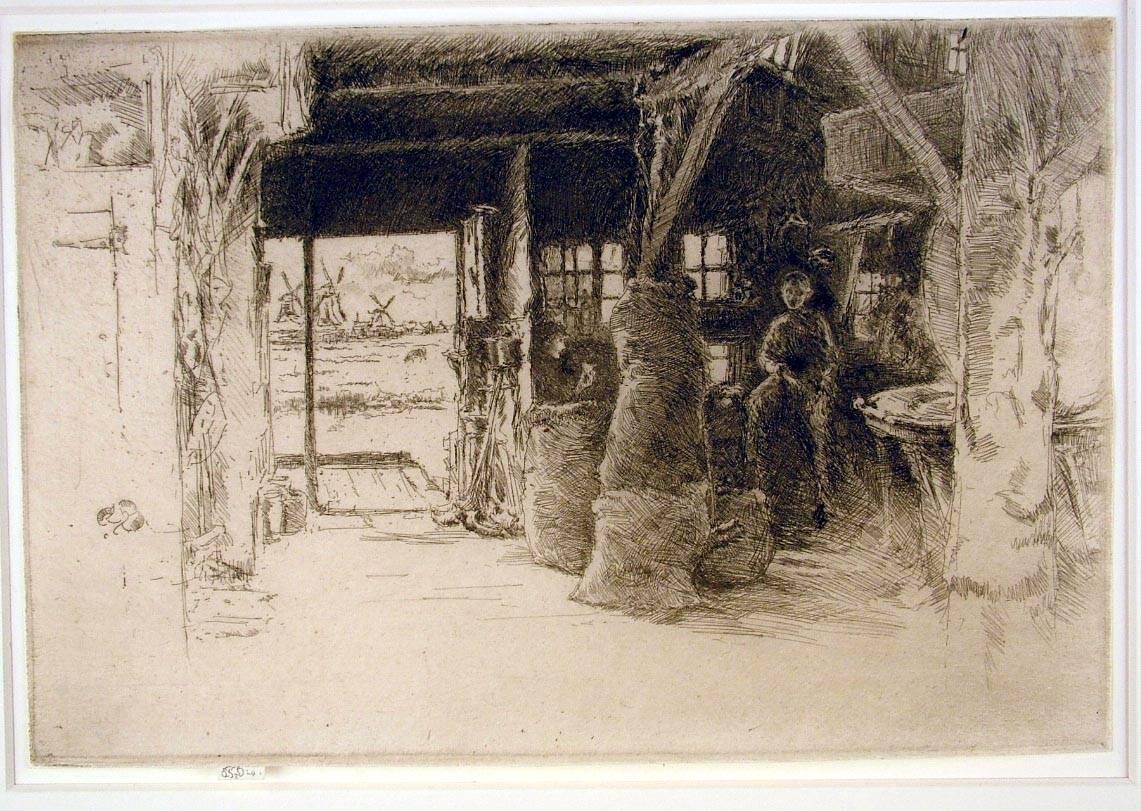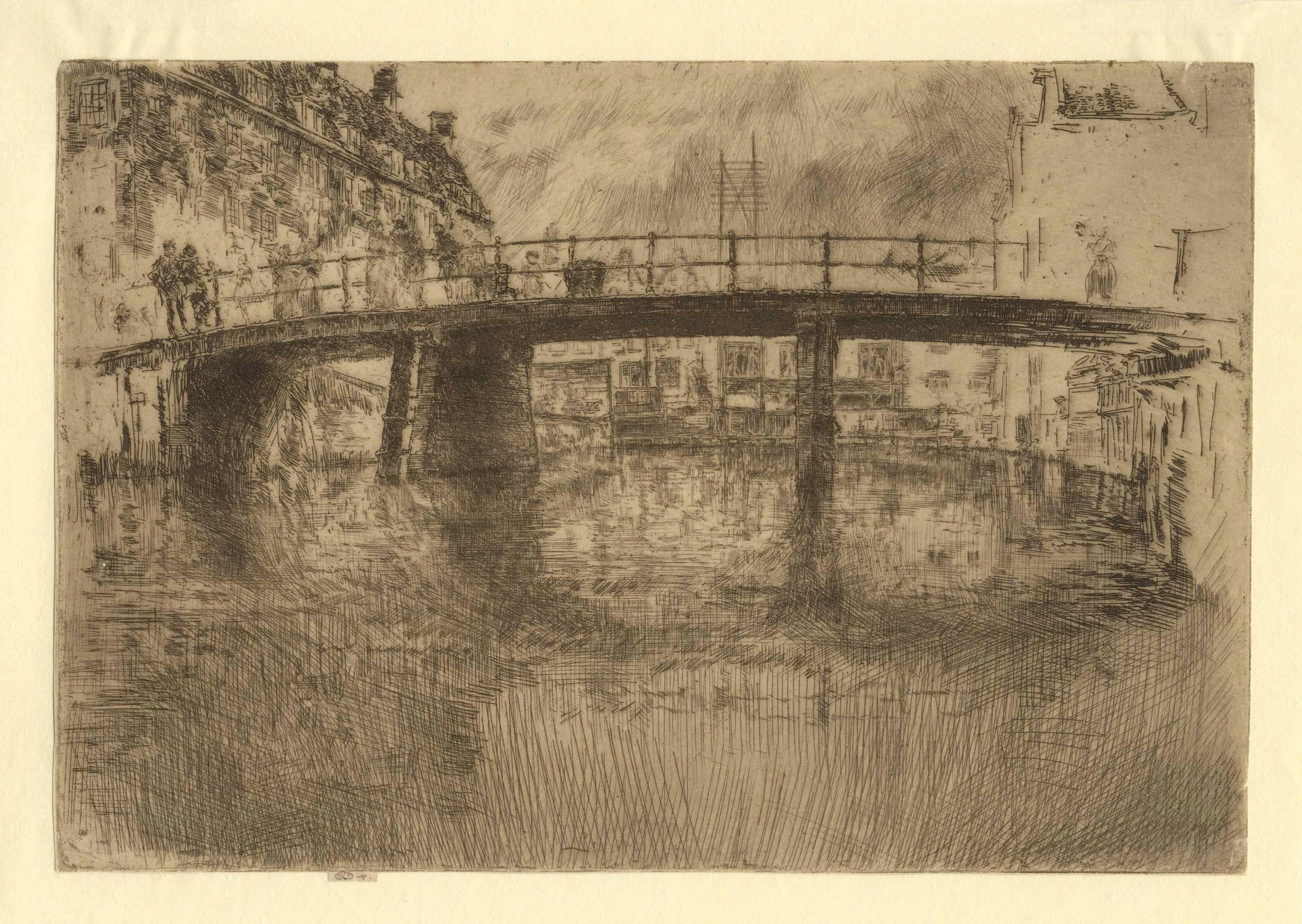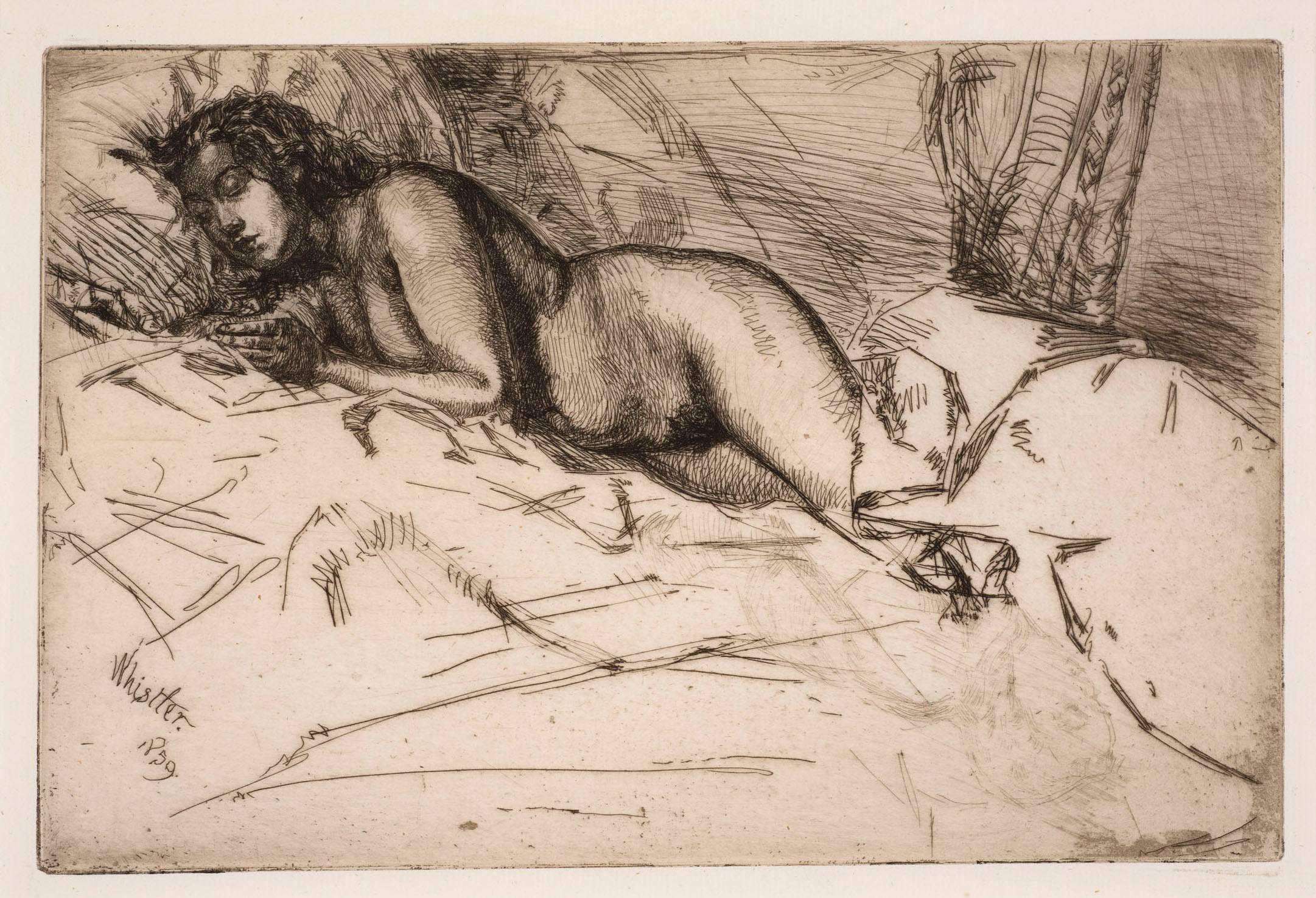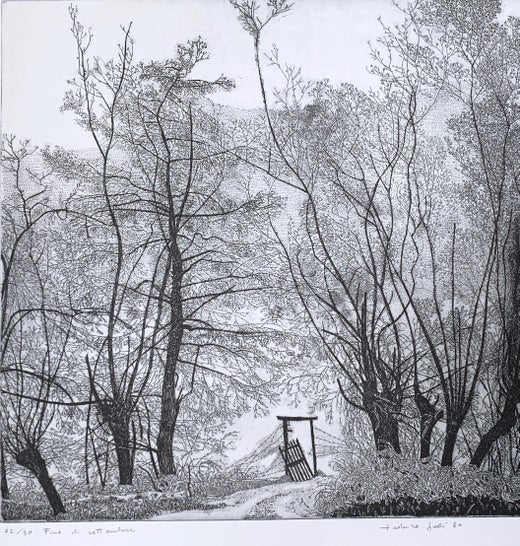Federica GalliI Cembri, 1983, rif. 472, Etching Print by Federica Galli1983
1983
About the Item
- Creator:Federica Galli (1932 - 2009, Italian)
- Creation Year:1983
- Dimensions:Height: 15.2 in (38.61 cm)Width: 15.3 in (38.87 cm)
- Medium:
- Period:
- Condition:
- Gallery Location:Milan, IT
- Reference Number:1stDibs: LU43139042362
Federica Galli
Federica Galli was an Italian contemporary artist, born in 1932, in Soresina, a village just outside Cremona, in Italy. She was a prominent figure of the art of engraving in Italy. Straight after World War II, in 1946, she convinced her parents to enrol her at the Artistic Lyceum, in Milan and in 1950, she went on to attend the Academy of Fine Arts of Brera, from where she graduated four years later, with a diploma in painting.
Federica began engraving in 1954, experimenting with etching, a technique she never abandoned for the rest of her life. In 1966, she married the journalist, Giovanni Raimondi, who was the editor-in-chief of the Corriere della Sera and began to embark on a densely packed programme of cultural trips, which took her to the most important European capitals and to countries where the art of engraving was less deeply rooted. This was also the year in which she got convinced that engraving was the technique in which she expressed herself most effectively and started to apply herself exclusively to this art form, producing over 800 different subjects.
Starting from her early personal exhibitions, the first one took place in 1960, in Milan, Federica met with the favor of the public and critics alike. In the space of a few years, she could count on the support of some of the most authoritative critics of her time. She obtained the most prestigious institutional acknowledgements given to any contemporary artist, which was of being the first living artist to be invited to exhibit at the Fondazione Cini, in Venice, in 1987, with a collection dedicated to the lagoon city. Collectors of her works include people of culture from Italy and abroad and individuals known for their cultivated passion for the graphic arts.
- ShippingRetrieving quote...Ships From: Milan, Italy
- Return PolicyA return for this item may be initiated within 2 days of delivery.
- Venice contemporary view - Night Giudecca black and white Federica GalliBy Federica GalliLocated in Milan, ITNocturne Venice landscape, Giudecca, plate mm 343 x 641 Original etching, signed and numbered, limited edition of 90. Maison Valentino set up the Giu...Category
21st Century and Contemporary Realist Landscape Prints
MaterialsEtching
- Venezia, contemporary black white print, Campo Abazia, by Federica GalliBy Federica GalliLocated in Milan, ITVenezia, Campo de l' Abazia, 1984 plate mm 491 x 243 Original etching, signed and numbered. Limited edition of 90. The etching was exhibited last year in the critical retrospective...Category
1980s Realist Landscape Prints
MaterialsEtching
- Venice canal view with classical renaissance architecture by italian etcherBy Federica GalliLocated in Milan, ITref. 549 A prominent figure of the art of engraving in Italy, Federica Galli was born in 1932 in Soresina – a village just outside Cremona. Straight after the war, in 1946, she conv...Category
1980s Realist Landscape Prints
MaterialsEtching
- Romantic Venice, Italian, corner. Black white print on paper. Nowaday grand TourBy Federica GalliLocated in Milan, ITVenezia, part of the portfolio of the 39 venice views. Calle delle Terese, 1984, rif. 546 Platemark mm 48.9x34.6. Original etching, signed and numbered. Limited edition of 90. The e...Category
1980s Realist Landscape Prints
MaterialsEtching, Laid Paper
- Contemporary water landscape of Venice, Rimedio bridge, print by Federica GalliBy Federica GalliLocated in Milan, ITPonte del Rimedio, Venezia, 1986 platemark mm 79.3 x 34.4 Original etching, signed and numbered. Limited edition of 90. The etching was exhibited last year in the critical retrospe...Category
1980s Realist Landscape Prints
MaterialsEtching
- Venice contemporary view, Campo S. Raffaele, black white print by Federica GalliBy Federica GalliLocated in Milan, ITVenezia, Calle San Raffaele (Raphael) Original etching, signed and numbered. Limited edition of 90. The etching was exhibited last year in the critical retrospective that the city o...Category
1980s Realist Figurative Prints
MaterialsEtching
- Les Deux MagotsBy Red GroomsLocated in New York, NYRed Grooms Les Deux Magots, 1985 etching and aquatint, ed. of 90 26 1/4 x 31 3/8 in. (66.7 x 79.9 cm)Category
1980s Contemporary Portrait Prints
MaterialsAquatint, Etching
- Narcissist Seeks Similar (Large)By Harland MillerLocated in Bristol, GBEtching with relief printing Edition of 45/50 Signed on the front, numbered on the back Mint Published by Manifold Editions, 2021 Our mission is to connect art collectors to opportu...Category
21st Century and Contemporary Contemporary Figurative Prints
MaterialsEtching
- The Mill, Amsterdam, 1889By James Abbott McNeill WhistlerLocated in New York, NYJames Whistler (1834-1903), The Mill, 1889, etching and drypoint, signed in pencil with the butterfly on the tab and inscribed “imp”, and inscribed “first state” (twice) and annotated “Wunderlich” and signed again with the butterfly verso. Reference: Kennedy 413, first state (of 5). Glasgow 457, second state (of 6; see discussion below) (cf. Margaret F. MacDonald, Grischka Petri, Meg Hausberg, and Joanna Meacock, James McNeill Whistler: The Etchings, a catalogue raisonné, University of Glasgow, 2011) On laid paper, in very good condition, trimmed just outside of the platemark all around except for the tab by the artist, 6 1/4 x 9 3/8 inches. A very fine impression of this great rarity, printed in black/brown ink with a slight veil of plate tone. provenance: H. Wunderlich & Co., New York Louis B. Dailey, New York (Lugt 4500) sale, Sotheby’s, New York, October 31, 2003, lot 69 literature; Neue Lagerliste 122: James McNeill Whistler – Etchings...Category
1880s Impressionist Landscape Prints
MaterialsDrypoint, Etching
- Bridge, AmsterdamBy James Abbott McNeill WhistlerLocated in New York, NYJames McNeill Whistler (1834-1903), Bridge, Amsterdam, etching, 1889, printed in brown ink on thin laid paper, signed with the butterfly on the tab and annotated “imp”, also signed with the butterfly on the verso and numbered 11. References: Kennedy 409, Glasgow 447, fifth state (of 5). In very good condition (slight nicks at edges), trimmed by the artist on the plate mark apart from the tab, 6 1/2 x 9 1/2 inches. Provenance: Vivian and Meyer P. Potamkin, Philadelphia; sale, Sotheby’s, New York, May 11, 1989, lot 302 Samuel Josefowitz, Pully, Switzerland A very fine, shimmering impression of this great rarity. This impression is included in the Glasgow inventory, ID number K4090301; only about 11 lifetime impressions in all states are known (three were also printed posthumously by Nathaniel Sparks...Category
1880s Impressionist Landscape Prints
MaterialsEtching
- Tatoo-Shave-HaircutBy Reginald MarshLocated in New York, NYReginald Marsh (1898-1934), Tattoo-Shave-Haircut, etching, 1932. Signed, titled (“Tattoo-Haircut-Shave”), dedicated (“for Arnold Newman”), and annotated (“Fourth State. First of Two Prints”). Reference: Sasowsky 140. On cream wove paper. In very good condition, with small margins (as trimmed, slightly irregularly, by the artist) (slight foxing in margins), remains of prior hinging verso; 9 7/8 x 9 3/4, the sheet 10 15/16 x 10 5/8 inches; archival matting. A very fine rich black impression; we have not seen impressions of comparable quality on the market. Provenance: Estate of Arnold Newman. Arnold Newman (1918-2006) was one of the great 20th Century masters of photography, and a friend of many leading artists; it is appears that Marsh took special care in printing this impression for Newman. Sasowsky calls for 10 states of Tattoo-Shave, based largely on Marsh’s notes. But the states are not clearly delineated (e.g., his States 3 and 4, one proof each, are characterized by Marsh as “Engraving added”; no information is given for State 5). The design for the print was complete in the first state, and subsequent state changes were not, apparently, major. This impression does not appear to differ in etching lines from the final state impression shown in Sasowsky. Its inscription (as a Fourth State, by Marsh), as well as its rich inking and quality, attest to its being a proof before the edition (of about 34 impressions), but the state of this print (and, presumably of many of the other several proof impressions) cannot at this time be stated with confidence. Marsh printed this impression personally (we recall his famous answer to a question about the size of his editions: “Since I do practically all my own printing, I do not limit the edition. The buyer limits the edition – he rarely buys, I rarely print”). Tattoo-Shave-Haircut depicts a scene in the Bowery, a section of New York’s Lower East Side, during the Great Depression. The building and train structures in the top half of the print recall Piranesi’s Carceri...Category
1930s American Realist Figurative Prints
MaterialsEtching
- VenusBy James Abbott McNeill WhistlerLocated in New York, NYJames Whistler (1834-1903), Venus, 1859. Etching and drypoint, printed in black ink on laid paper, an impression in the second (final) state: there was no published edition. 6 x 9 inches (15 x 22.6 cm) sheet 73/8 x 117/8 inches (18.8 x 30.3 cm) Reference: Kennedy 59; Glasgow 60 A very fine impression. A study of Héloïse, ‘Fumette’, asleep in bed, her head pressed into the pillow and the bedclothes covering her lower legs. This is one of three portraits Whistler made of Fumette in 1859: one of the others shows her standing and in the third only her head and shoulders are depicted. Venus is a work in the Realist tradition, and may be compared with Courbet’s nudes of the same period. The artist may also have had in mind Rembrandt’s study of Antiope in his etching Jupiter and Antiope. Venus was never published and there is no record of it being shown until 1898 when it was included in an Exhibition of Etchings, Drypoints and Lithographs by Whistler at H. Wunderlich & Co., New York. To have been overlooked for exhibition until so late in Whistler’s life might suggest that the subject was considered improper. Frederick Wedmore, whose catalogue of Whistler’s etchings...Category
1850s Impressionist Nude Prints
MaterialsDrypoint, Etching
